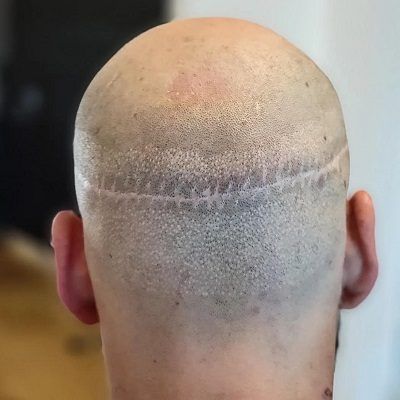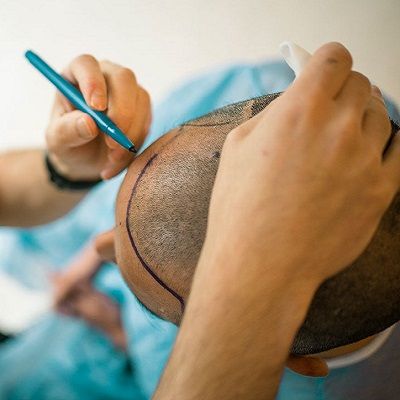
Many people shock when start shedding hair after Hair Transplant Surgery. One can assume that the hair restoration operation was unsuccessful. If the implanted hairs start to come out again within a few weeks. But, transient hair loss is 100% natural. The process of hair transplantation is no longer uncommon in modern times. After the procedure, many people are raising their self-esteem. Because even in today’s enlightened culture. Having beautiful hair still represents prosperity. This is not the case when there are bald patches on the head. But, many patients are astonished when the transplanted hair falls out after a few weeks. But there’s no need to panic. Biological, genetic, and environmental variables can cause hair loss. Luckily, the problem is treatable.
Aim:
The procedure helps restore hair to parts of your scalp where it has been lost or is receding. This advanced natural hair transplant procedure boosts your confidence. It can help you regain your hair without considering the causes of baldness. The major goal of the treatment is to provide living shafts for thinning parts. So they can generate thicker hair. But this simplifies what a hair transplant is meant to do. These are the main reasons for getting a Hair Transplant in Dubai.
- Results that seem natural, even if you lose existing hair around the area. Experts build a hairline that doesn’t seem fake.
- The appearance is enhanced with a hair transplant, which boosts self-esteem.
- No extra attention is necessary.
- You won’t need to use special hair care products.
- The new hair can be washed like natural hair.
Is Hair Loss after a Hair Transplant Normal?
Yes. After the restoration procedure, temporary hair loss is common. This is a minor consequence of hair regrowth treatment. That is hilarious. It is typical for transplant hair to fall out due to shock two to eight weeks after surgery. Head hair appears thin by the 3rd cycle after a graft. The grafted follicles start growing hair once the shock wears off. As the grafted hair grew back, it will seem longer and fuller.
Preoperative Care:
Depending on the method the experts have recommended. You will receive instructions on how to be ready for a hair transplant. The hair surgeon will provide you with a list of recommendations for:
- Your consumption of food and drinks.
- Applicants must avoid smoke and alcohol.
- Avoid taking minerals and vitamins.
To enhance the healing and ensure that the procedure will be successful. Smoking disrupts the blood flow in the scalp. Which prevents the growth of transplanted hair. Incorporate healthful behaviors into your lifestyle. This covers behaviors that are good for both physical and mental health.
Techniques:
Hair plugs were the only hair transplantation technique accessible in the past. The infancy of the hair transplantation industry was reflected in this procedure. Which was unable to produce results that look natural. But then came FUT, a hair transplantation technique. That is still used in the hair restoration sector today. Then other hair transplantation techniques were created. It provides people with hair loss with a variety of options. The following techniques are available for hair transplantation.
FUT Hair Replacement:
FUT Cutting a strip of skin from the hair-rich area. And separating it into individual grafts is the key step in the transplant procedure. The recipient’s balding areas are then implanted with these transplants. This procedure is regarded as the gold standard for concealing. And balding man’s male pattern baldness.
FUE Hair Restoration:
The procedure is known as FUE. It involves removing individual hair transplants from the back of the head. And transplanting them to the recipient area. By using this method, you can avoid cutting a strip graft. Which is a common FUT procedure. Because there are fewer visible scars on the donor area. And the outcomes are better looking. This method has gained greater popularity than FUT.
Transplanting Hair Using Stem Cells:
FUE hair transplantation uses a combination of stem cells. And follicular unit extraction techniques to regenerate hair in balding areas. With this method, the donor site’s hair follicles are not removed. As an alternative, the surgeon sends a few donor grafts to the lab after extracting them. Stem cells are used by lab professionals to create identical follicular transplants. Which they then deliver to your surgeon. They then insert those grafts into the area of the head that is balding.
Hair Implant by Robot:
The procedure uses artificial intelligence to direct a robot to collect hair grafts. The follicular unit extraction technique is used in this hair restoration approach.
Hybrid Hair Replacement:
FUE and FUT techniques are used to remove hair follicles during a hybrid hair transplant. When you have a severe lack of hair on the back of your head. This hair transplantation strategy will function best. The method’s ability to remove the most hair transplants in a single session. It’s the most significant advantage.
Hair Fall Prevention and Aftercare:
After the procedure, here is a brief guide on how to care for your scalp and hair.
The Initial Days:
- You are allowed to go home right away after treatment.
- It is advised that you take a few days off to recover at home.
- The treated area must not be scratched or rubbed.
- Avoid any demanding activities that could cause you to perspire.
- If you must go outside, put on a cap that fits.
Managing Pain and Swelling:
- For about a week after surgery, you will have some discomfort and swelling.
- It will go away after a week.
- It would be preferable to consider the use of painkillers.
- If you want to ease the discomfort.
Infections:
- Although they are uncommon following a hair transplant.
- Infections can occur despite this.
- It is essential to avoid sweating and exposure to dirt and dust for at least two weeks.
- If discomfort and swelling last longer than two weeks, you should notify your surgeon.
Taking up Regular Activities:
- Unless your employment requires you to perform physically demanding tasks.
- You can go back to work two days after having a hair transplant.
Itching and Peeling:
- You can get relief from the itching by using a regular, sterile saline solution.
- Aloe vera gel application is also helpful.
- Seven to ten days following surgery, the treated area will start to crust and peel.
- You can wait for this process to finish.
Hair Washing:
- Three to four days following surgery, you can wash your hair.
- But it’s crucial to use a gentle shampoo and pour water on the head.
- When applying the shampoo, use delicate fingertips.
- When massaging the scalp, you must also refrain from pulling at the hair.
Haircutting and Styling:
- At least six months after a hair transplant.
- You can use a razor and scissors to cut your hair.
- When combing, remember to use soft hands and exercise extreme caution.
Cost:
The Cost of a Hair Transplant in Dubai ranges from AED 7,000 to AED 14,000. It is not constant; it depends on many elements. The expertise of a doctor. The condition of the patient. The location of the clinic and other factors.
Why Pick Us?
We are providing you with treatment for Hair loss. The surgeons at the Dynamic Clinic are experienced. Fill out the form below to get your first free consultation.


































